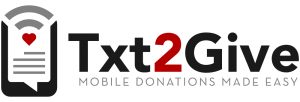I love our sponsors!
Do you want to find more prospects & raise more money? Pursuant is a full-service fundraising agency, leveraging data & technology.
WegnerCPAs. Guiding you. Beyond the numbers.
Credit & debit card processing by telos. Payment processing is now passive revenue for your org.
Fundraising doesn’t have to be hard. Txt2Give makes it easy to receive donations using simple text messages.
Get Nonprofit Radio insider alerts!
Listen Live or Archive:
- On Fridays at 1pm Eastern: Talking Alternative Radio and tune in
- Listen to the August 24, 2018 archived podcast
My Guests:
Oren Levine, Lisa Ghisolf, & Emily Patterson: Your Website Redesign
It’s your step-by-step guide to a website makeover. Let’s include gaining stakeholder support, managing contractors and using data to drive better engagement. Our panel from the Nonprofit Technology Conference is Oren Levine with International Center for Journalists; Lisa Ghisolf with GizmoCreative Factory; and Emily Patterson, founder of BeeMeasure.
Amy Sample Ward: Overmarketing
 It drives Amy Sample Ward bananas. Let’s talk through her issues and preventative measures. She’s our social media contributor and the CEO of NTEN, Nonprofit Technology Network.
It drives Amy Sample Ward bananas. Let’s talk through her issues and preventative measures. She’s our social media contributor and the CEO of NTEN, Nonprofit Technology Network.

Top Trends. Sound Advice. Lively Conversation.
Board relations. Fundraising. Volunteer management. Prospect research. Legal compliance. Accounting. Finance. Investments. Donor relations. Public relations. Marketing. Technology. Social media.
Every nonprofit struggles with these issues. Big nonprofits hire experts. The other 95% listen to Tony Martignetti Nonprofit Radio. Trusted experts and leading thinkers join me each week to tackle the tough issues. If you have big dreams but a small budget, you have a home at Tony Martignetti Nonprofit Radio.
Get Nonprofit Radio insider alerts!
Sponsored by:
Processed on: 2018-11-11T23:52:45.793Z
S3 bucket containing transcription results: transcript.results
Link to bucket: s3.console.aws.amazon.com/s3/buckets/transcript.results
Path to JSON: 2018…08…404_tony_martignetti_nonprofit_radio_20180824.mp3.988336179.json
Path to text: transcripts/2018/08/404_tony_martignetti_nonprofit_radio_20180824.txt
Oh, hi, hello and welcome to tony martignetti non-profit radio big non-profit ideas for the other ninety five percent on your aptly named host. Oh, i’m glad you’re with me. I’d be thrown into a habit ood if you told me the dull idea that you missed today’s, show your website redesign it’s your step by step guide to a web site makeover let’s include gaining stakeholder support, managing contractors and using data to drive better engagement. Our panel from the non-profit technology conference is orin levine with international centre for journalists. Lisa gets off with gizmo creative factory and emily paterson, founder of be measure and over marketing it drives amy sample ward bananas let’s talk through her issues she’s, a social media contributor and the ceo of n ten non-profit technology network i told you to, i’m wagging my finger, responsive by pursuing full service fund-raising data driven and technology enabled tony dahna slash pursuing capital p well, you see piela is guiding you beyond the numbers. Weather cps dot com bye tello’s durney credit card processing into your passive revenue stream. Tony dahna slash tony tello’s on by text to give amglobal donations made easy text npr to four, four, four, nine, nine, nine here is your website, redesigned from non-profit technology conference. Welcome to tony martignetti non-profit radio coverage of eighteen ntcdinosaur non-profit technology conference. We’re hosted by the non-profit technology network, coming to you from new orleans in the convention center. This interview, like all our eighteen ntcdinosaur views, is sponsored by network for good, easy to use donor-centric software for non-profits, i guess now are orin levine, lisa gets off and emily patterson, or in his director of innovation at the international centre for journalists. Lisa is founder and creative director at gizmo creative factory, and emily patterson is founder. Be measured that’s b e like the insect welcome buy-in. Your seminar topic is gourmet taste on a pizza budget. Tackling a website, we design for small non-profits, and i noticed that in your session description, use the word small three times. That’s perfect for non-profit radio because our twelve thousand listeners are in small and midsize non-profits. So i don’t have to admonish you or remind you even taylor, your comments too small and midsize or no, i don’t, because it’s, you’re right, it’s in your dna, it’s in the dna of your workshop topic, anyway, get carried away. Personal. Okay. What what are the challenges? Let’s, start down there with emily on the far end? What are the challenges with website redesign? Hyre? Definitely, i compare website redesigns, teo doing laundry, at least at my house. Okay, that it’s something where it feels like you put all this work into it, and then when you’re done well, there’s a whole new basket of laundry, and you need to start all over again. Yes, it’s, a project that it could take over here and then it’s. You know, another year passes by and it’s, time to start redesigning your website all over again, because technology and trends change so frequently, something you have constantly have to keep up with. What do you part of what you described way? Have you done your workshop yet, or it’s coming? No it’s tomorrow at one thirty and that’s a preparation for you? Okay, she’s like a batting range, putting, putting green. I don’t know too much. I don’t be doing sports analogies that that was a mistake i don’t anything about. I don’t know anything about either of those sports, football or tennis, so okay, what do you need? What do you need to have in place? Could we start with you? Lisa, can you could you adjust that one? What do you need to let in place? But think about before you embark on hiring someone to do it or doing it in house? What do you need to think about? You really have to think about weirder site is now and if it’s working for you and if you comptel, if it’s working for you, since we generally have analytics, but also are you getting the results that you want out of it? Are your constituents getting what they need out of it all of that kind of thing? And then it’s just improving upon what you have if its content or design usability, all of those things, okay? Or you want to add wear at the pre stage now, exactly. And this is in some ways where the small comes in, because one of things your back of your mind is, is what resource is do you have realistically to approach the project, which will probably be less resource is than you would love to have? Especially if you know you’re looking at other websites and say, oh, i’d love to have a website like name your large corporation here and because you’re not small non-profit you can’t. And in addition to the questions, lisa was passing one of the question, in fact, you need to ask is, you know, why do i have a website at all? You know, it’s really gets down to what am i doing? I’m murcott what’s the purpose why do i want people to visit me in the web but who’s coming to visit? What do i want them to do when they get there? And by being really careful about asking those questions that helps you match what you could do there to the limited budget you’re going toe? How do you overcome this stick of the orange? How do you overcome not knowing what could do? It is not your site is not doing it now, but it could, but but you don’t know. What it could do because you’re not already exploiting that. How do you feel that gap, that knowledge gap? Well, it’s ah, sort of a balance between what what it’s already doing, what it could do and what you wanted to do. And a lot of what we talked about in our own organization was trying to distill down of all of our laundry list or went backto the laundry analogy, a laundry list, emily’s basket wish list of all the things you wanted to do or could do or might do an ideal world. It’s really important to try to focus down on a few very, very critical things that you want the website to do. Focus your efforts there that both helps focus the minds of the people who are responsible for the website and then focusing your budget on a realistic set of goals you can achieve. So you might brainstorm and then and then and then focus exactly two realities. Okay, okay. See about something else you pledged to cover in your workshop. Hold your feet to the fire. Think about who to hire. Whether you need is who wants to take this one first? Whether. Whether you need expertise, we don’t necessarily have to go in line. One, two, three, three, two, one, which i don’t i don’t like that, but we can now for now anyway. There’s soup for now, but i’ll bring it up if we keep up with us whether whether you should a lot of small orcs probably do need help, right, then we’re gonna need some technical help. This website project definitely on dh speaking as a designer and developer, generally i come in when they don’t have those resource is on staff, or if those people are overwhelmed and speaking to lauren’s point, sometimes you can brainstorm with those people and find out exactly new things that you may not be aware of ways that you can integrate databases better, etcetera on improving communication. So, you know, so much of it is just what you’re re sources are and what you’re willing to put forth. So you’re often in the role of having tio make the expectations fit the budget. Yes, we can’t do that yet. I know you would love to, but if you want to do these other things that you said were playing top three priorities. And we can’t do this. You can’t have six priorities. Yeah, i’m a big believer in phase development, so if you could do it in six months, then we’ll do it in six months when it’s more feasible. Okay, how do you, uh, how do you message that reduction down, too of reality when it when you’re talking to the ceo executive director? Oh, gosh, i mean, i basically put it the exact same way that we can do this in six months. We can still make it happen with the budget that you have, but if you want to put more towards that, then of course, we could make plenty of things happening now, so okay, so bring it down. Arika money. Yes. Way to spread it out. You can have it, but it’s gonna take longer. Okay? In fact, one of the things we talked about in the session is sort of tricks. I learned i was emily start going out orders don’t get going out at one point, i want i want to head over to emily because she’s really the expert on how to manage to ceo seo, i’d better let her speak for that. I’m not going sequence. I don’t want you to continue, okay? My my one question is that one of the now now a great host, it’s time for a break, pursuing their newest paper is pursuing e-giving outlook it’s a roundup of all the fund-raising data that you need, they took the latest fund-raising reports boiled them down to the essentials into a concise content paper, plus there’s a video archive of the weapon, or that they did around this whole subject. It’s, an ensemble piece, paper and webinar both on the listener landing page. Tony dahna slash pursuant capital p for please now, back to your website redesign say something talk emily yeah, it was like they had a message to you, ceo message manage expectations about the top level uh, so i think one of the things that people don’t realize, especially at the top level around website redesigns is just yeah, how much, how much work and how much? And thus time and money is involved, and i think having teo yeah, message and set expectations around that is a big challenge buy-in vices that i’ve worked and now in a zoo independent consultant, my point of contact is typically, you know, you’re marketing director or your communications person who have, who handles all of communications and all of fund-raising so kind of a mid level person and being able to work with them to help them set expectations with there with their boss around the web website, because i think a lot of a lot of executive directors, you know, they’re a little bit detached from the project and, you know, they’re looking online, and they’re seeing all of this awesome stuff that other organizations or, you know, even for-profit companies are able to dio and they don’t realize, you know how much time and money needs to go into that. I’m going to pick up on on emily’s point, that becoming the position of being the non-profit that’s working with cos, you know, we were designing the web site, and one of the things we try to make sure of is we knew internally in our own organization who who is responsible to make the final decision so that, you know, family’s talking the communications director, she needs to know that when the communications director says we’re not going to do this, then hearst boss is not going to come down two weeks later and say, well, actually, we are let’s keep that anyway, because that’s, how you lied to basically blowing your budget and changing your plans. So it’s, very important as an organization is a nonprofit taking on the project to be clear in advance. Who are the decision makers? Who are the real stakeholders, who is going to make the decisions and who needs to stay out of the way? That’s perfect. So who should be let’s? Go to you family? Who should be part of this design team? I mean, i think having one clear a person who is ultimately one person is in charge. Yes, having been in the position where three people are making the decision, you know that doesn’t really work. So ultimately one person has to have the final say. So we are we are not doing this, but i think lots of people should be involved and be able to have their input because you will otherwise get in this situation. Where oranges years, months later i don’t know. How’d we get this? Yes or no? You roll that definitely derail your project. If all of a sudden you had someone pop up and say hey, what happened? Teo x y z i thought we were doing this, and then as a consultant to be the person who says, oh, sorry, that’s not in the budget, i think it’s so we need to think through in the beginning stages, who are the stakeholders? So but with the web, but at our website affects everybody. Lisa, how do we decide whose we can’t have too many people in the process? I already said that how do we decide who should be part of this process and who should be sidelined? A big part of that for me is design theory. Tio it’s basically starting off with talking to all of the people who are going to be using the site. So if it’s one person from the board, one person from the staff, one actual end user, et cetera, and they don’t necessarily have to be people who are involved in the decision making part of it. But fighting out how they actually use the site and how they would like to use the site and how it all fits into the overall organization makes a huge difference in the end result and how successful it is, okay or anything you want to add to this? Yeah. And that’s another reason why inside the organisation it helps to have somebody you can sort of manage some of those relationships internally in some ways be a bridge between the organization and the external party. I in some ways fulfill that role in my organization. I’m not responsible for the site, partially because i have experiences a web product manager, i’m ableto some ways mediate, i suppose, between some of the internal forces intentions and our external external vendors, and that makes life easier for them because they have fewer people to talk to, and we’re clear decision making it makes life easier for us and that we’re able to resolve some of our issues ideally before we start having to pay for it’s going to more detail on this, managing the contractors or contractor whatever that is doing the process. Emily, you’ve got something you want. I was going to say that i think having your communications director or someone at that level lead the project is a good call because they’re in a role where they khun both understand more closely, like the technical side of what we’ll need to go into this because they’re close enough. To the project, where they might be in a role where they’re updating the website. But then there also. Removed a little bit from it and more into the business side of things where they can understand the bigger picture and the business decisions and the important role that stakeholders play. Where i think if you put the website in the i t department and have that management come from that side, they might spend more time kind of focused on how is everything working exactly and ignore the business side of war on the into the code? Okay, okay, let’s, let’s talk more about managing the contract with doing this project for us out. How do you? How do you like to be managed? I don’t like to be managed, but well, essentially the biggest thing is always communication on both ends of it and setting expectations. Some people love to talk only via email, some are i need to get on the phone with you to make you understand this and it’s an inter generational thing, it’s just it’s. Everybody certainly has different feelings on that bye, setting up expectations of how often we’re going to talk, how we’re going to talk, how we’re going to be managing all of these assets, all of these things that makes things so much easier down the line, and you don’t have developers who disappear or gaps in knowledge where well, we have no idea where we’re hosted right now, which is a huge deal, because so many people don’t really know all their passwords and everything. So let’s, let’s move to something else that you were are going to cover tomorrow. Use of data, you said data tio dr better flew and better engagement. Who’s the everybody plays family, right? Emily, you’re got two thumbs pointing to you. Yes. Yeah. That’s. The data portion of it is really my specialty. Okay, so we’re going to talk a little bit about what the stakeholder they wrote to me in for the stakeholder section because i had had this other presentation that oren saw where it was about using data to kind of manage people’s personalities, but definitely needed to manage personnel. That was that was different. There was somewhere else. Yeah. Is that another? Another kind of interested? Okay, about how you can take the day that you collect and then use it. Tio appears the different sort of questions and issues that pop with your different stakeholders, but definitely before you embark on your redesigned some suggestions about, you know what sorts of data people should look at, a lot of it depends on what sorts of issues pop up with your various people who are involved. I really kind of feel like there’s kind of three basic types of issues that it will happen, you know, there’s the sort of person who doesn’t you might have it from your executive director or from another person, your organization, they don’t necessarily want to spend any money, so helping to make the case that we need to make this investment and we need to invest in better technology, you can use your your google analytics user testing surveys a variety of different things to get a good picture of what’s going on with your audience because who’s using your website is not necessarily reflecting the needs of the person using your website isn’t reflecting. You know the needs of the people in your audience, they’re not in your office, they’re not the same. Okay, what else about data? I’m so you also get the person who is has all the fun ideas, maybe, you know, reads a lot of things. Online about the latest trends, and we need to have this widget and that widget and helping them get a good perspective on, you know, what’s really going on with our users where we really having problems with our site right now that definitely need to be fixed in the in the redesign, you can use google analytics things like back-up they have a funnel feature to see you. Nowhere in your process is people you’re losing people dropping out, leaving your side, and then i love surveys and user testing as a way to hear from riel people how frustrating it is for them to use certain functions on your website. So who would you send those surveys to? Is that that cut across all your constituents metoo donors, board members, people who are engaged, engaged with your programs, receiving your service is all those people get survey like that? It depends. I’ve done ones on the website, which i think are nice. Google has ah, very low cost pop up sort of survey you may have seen them before that you can answer a couple questions, and then there’s typically kind of an open end response, which is a great source for people’s france. Ok, things are kind of questions. Do we ask? You can certainly ask about user rolls if you want. If it’s important for you and your your website to understand who’s used what constituency you would word it this way, but what constituency they fit into. We’re delivering services, etcetera. Okay. What? What else do you want to find out? That’s? Fine, but you could totally keep it super simple. And just as something like, you know, what brings you to the site today? Are you satisfied with your experience? If not, you know what recommendations do you have for us? Those three questions? I think we’ll get you a good picture of what’s going on. I mean, i’ve had guests on who say the best survey is, like, five fewer questions. Oh, yeah, definitely. Okay, so short is not problematic. It all it’s preferred? Yeah, especially if you you know, you’re kind of you’re popping up at them. They’re coming to your sight because they’re trying to do something else. So you want to keep the survey short because you’re kind of interrupting their experience? What else can wait? Talk about around this? You’re going, you’re going to feel ninety minutes tomorrow. Well, let me add another more point about data again. I’m coming at this from persuaded emily. So i thought the data when emily stop, okay or you can talk about data. Whenever we took a breath, i thought that was the end of the day that i could talk for days about data e talking about okay, just the one small point i wanted to make again back to managing expectations, it’s away to also manage expectations your stakeholders had about people who are wedded to. We’ve always had this section on the website i love this information is valuable and it’s useful to be able to go to analytic state and say twenty, people visited this page in the last five years. We don’t need it. Okay? Spell, myth it’s also a legacy pages that people are tied to strongly, but nobody else cares it’s also testing out processes to like, how long does it take someone to actually make a donation or to find the volunteer form or something like that? Does it take to long for them to get there and they get tired of it? And they just leave, or does the executive director have an idea that they love this particular feature, but no one’s clicking on it or they wantto accident actually everyone’s clicking on it. And we don’t know that unless we actually get true user data, so it helps it. A lot of scenarios are based in reality. You know, the numbers no like yeah. All right. Uh, okay, so we still have you just took it five or six minutes together. What else can we talk about on this topic website? Redesigned. You promised a step by step guide. We missed any step. Well, there’s, plenty of stuff. Cemetery. Alright, so name some names, something we haven’t talked about it content auditing of your current site. So actually, i’m going to cut you off there, like three or four sessions ago, we talked about content, name another one and another step way of linking on it that we haven’t talked a lot of sessions, police about post launch care and the whole yeah, because to me kind of the laundry analogy to but to me, a website is a living, breathing thing. And just because you’re done with it, because it launched does not mean that it is done. You need to keep feeding that for google to pay attention to and for your users to pay attention to. You also need to be aware of the ongoing costs of maintaining the site and keeping it secure. Ilsen and already you have a laundry. Now you wanna bring laundry and maybe a lot of what you want. I’m thinking more about sort of laundry all of a sudden, you know, chris created out of no where in your hamper, because what happens is part of the consequence. If you’ve been really successful, i think in managing expectations and limiting the scope of your redesign and coming up with a very clean site, that means there are going to be items that fell off the must have list that are now on the might have list or nice to have list, but after launch that’s an opportunity to sort of incrementally add in some of the things you may have wanted to do earlier as budget becomes available. That’s part of what lisa was saying about it’s, an ongoing project not only maintenance but ongoing improvement i remember, but i used to work at a large non-profit before people with sort of a background in your television program, you would say that keep iooking cleanse the website done, and i think least i mentioned at the beginning of our talk it’s never done that’s an ongoing lisa, do you see? Oh, our emily also commonalities around things that people want but don’t really need or, you know, durney generalities about things that they say is a top priority, but really it’s, not any any generalizations you could make around that. How about home paint sliders? I was just thinking that way, but everybody loves big sliders, right? No one clicks on them. They really don’t know. They don’t stop it to go back. So many guys attract many home page sliders. Yes, they get teo slide too, i think. Yeah, they and then they go to what they really want. Okay, i think people, maybe this is at least as different impressions. But i think there’s just too much emphasis and too many politics around the home page and what goes on on the home page because most sites people are coming in sideways, you get a lot of people coming in. From search, especially if your sight is well designed and has, you know, all the ceo best practices. People will come in to your bog post or to your content pages, and they’ll never see your home page. And so in projects i’ve been involved with, the home page gets very political and can stall things. Okay, that’s, old thinking that everybody’s coming directly to our our main, our main domain. And everybody wants a piece of it. Yes, there’s a lot of fighting about. Okay, so you are generalizing about okay, george, as i was going to bring this up before, but yeah. There’s a lot of oh, you know, my department needs to go on the home page. This is very important. Very important to this organization. All right, all right. What else could we were going to flush out? A little bit more? Got another couple minutes left. What one thing is, i was going to advise i came up with a bunch of sort of tips and tricks. If you’re inside the organizations that have ways too, to keep your stakeholders, i was going to use the word under control. But that’s a bit of a loaded term, but back to the prioritization, you know, prioritization is really critical, you know, making those choices about what you want to do and there’s been lots of cases in several projects i’ve worked on when you know your stakeholders might have a long list of things they want to do. And as somebody who’s running a project it’s really important to learn how to say pick one really focuses the mind i sway for, you’re not going to need that. That sort of thing to really help helps sort of focus the issue. Everybody gets one right, you could. You could name as many as you like, but you’re gonna get one priority. Okay, okay, yeah buy-in talking to clients. I used to say to people, you know, we can do this, you know, or we could do this and that response, wass, what can we do both. So i have learned to rephrase it and say, here are three options, pick one, okay. We asked what you, uh so what do you love about the work that you do? You know, organizations i work within cos they’re so wide ranging that it always amazes me what you can learn, what you can pick up and all of the commonalities of them too, you know, there there’s so many things that they’re all trying to get across, even if they’re a tiny little organization. So it’s, um, and making a difference with it with the actual and product from what they can about you are what you love about this work. I think what’s really interesting about the work is one year’s going setting off on a website redesign you think you’re doing a technology project, and it almost inevitably ends up being a management project because i think we’ve alluded to it before that the company’s your organization’s website is really related to how it’s organised how the organization works and you end up sometimes having more conversations about how the organization works and how we’re running on what our strategies then, about technology, about the actual some introspection. Okay, emily, i’m gonna give you ten or fifteen seconds. What do you like? What you love about this work your work about the work that i d’oh. I mean, i like that it’s always changing. I specialize in data stuff and it’s a field that’s constantly evolving. So i like that aspect of being able teo, keep up on it and always be just like our websites. Yeah, conley evolving. Always changing. Never finished. All right, they’re orin levine, director of innovation at the international centre for journalists. Lisa lisa it’s. A guess off. Yeah. Sounder and creative. Director of gizmo creative factory and emily paterson, founder of be measured. Thanks so much for being with us. I think this interview like all of them here it eighteen ntc sponsored by network for good, easy to use dorner management and fund-raising software for non-profits. Thanks so much for being with non-profit video coverage of the twenty eighteen non-profit technology conference. We need to take a break. Wagner. Cps for pete’s sake, talk to you. Eat huge tomb. You know the man. You heard him on our four hundred show. Did he sound high pressure to you? Of course not. He sounded like the gentleman that he is gentlemanly and professional. Check out the farm of course. Got to do your due diligence. Do your research weinger cps dot com then pick up the phone. Talk to you, wagner, cpas dot com then moved to real life now tony steak too it’s finger wagging time. I want you to plan ahead so that you make time don’t just look for it try to find it. You make time for yourself yourself over labor day weekend time alone, its restorative you heard last week steve rio talk about thie the benefits throughout your day of of mindfulness and presence, and even maybe ah meditation for a couple of minutes. I mean, they do virtual meditations of bright webb, he said, every day for five minutes, take time for yourself. Make time for yourself over labor day weekend, even if even if part of it is a nap. It’s restorative, you’re in e-giving profession you give you give, you have to be a little selfish and take make that time for yourself wagging my finger and there’s a little bit more on that in the video at tony martignetti dot com what a pleasure to have amy sample ward back. She is our social media contributor. Ceo of intend the non-profit technology network her most recent court third book, social change, anytime everywhere about online multi-channel engagement she’s at amy, sample board, dot or ge and at amy rs ward. Welcome back, amy. I think having me back, it’s always a pleasure. You’re always you’re always welcome back. This shouldn’t be a surprise. Should be a surprise to you. We always work well, i hope that you’ll let me know if i get cut from the roster will stop taking your calls. Know that we’ll have to wait on the phone. I’ll call in with a different say. I have a question to make up a different name. All right. Um, we’re talking about over marketing over marketing. This is a, uh, a bothersome thing for you. Yeah, yeah. I mean, i think it’s probably bothersome to everyone. That’s. Why it’s not successful? Yeah, it’s. In the long run, it annoys people and they turn off. Okay, i think that’s true. You know, maybe we’ll look att cem symptoms of over marketing so that you can do some self assessment. I think it’s it’s, probably one of these things is much easier to see in other people which may be coming totally right. I think it’s definitely hard to self diagnose your organization as an over marketer and instead very easy to look at other communications, other websites, what have you and feel like? Oh my gosh. You know and just to be clear, when i say over market and maybe this is a point of clarification between the two of us, i am curious how you define it. But for me, over marketing is when you market everything equally instead of choosing as an organization what your priorities are. Okay, so it seems very scattershot the marketing then from that those kinds of organizations very scattershot, everything is equally urgent. Everything is equal, equally impactful. Everything is, you know equally the thing that you want people to do right, then yeah. Okay, interesting might might my sense of it is it’s it’s i’m more looking at the frequency you know, if i get too many emails too many if i see your twitter you know, blowing up my twitter stream you know, i see i see too much from you it’s it’s too much it well in however, you define the time but e i’m seeing too much, um, well, and i think that that frequency piece could is, you know, one of the ways that over marketing manifest, because you could also say that it, um, you know, separate from frequency, it could just be type it could be that you are just like your web site is, you can’t even navigate it because every single thing has to have its own space on your home page that’s the call to action and whatever, you know, there’s different ways that it might manifest, but frequency certainly is a big one. Ok? And christie’s bleed over. I mean, you know, if your if your website has everything is an equally high priority, then that’s the trouble you were, you know, that’s, the trouble that you’re that bothers you the most is that every everything is urgent going on and everything has a page, every page is called action. You know, his first came to me as an idea because someone sent me an email with i printed it. It’s literally the the email signature is a half a page and i did not printed in eighteen point five i put it in twelve point fund. A very reasonable size. I’m this person’s email signature is a half takes up a half a page, right? I’m sure that the emails they’re sending two people are, you know, a very reasonable, like hi, tony, and then a couple sentences and thanks so much. And yet their signature is three times that. Yeah, yeah. Or more. It’s, you know, there’s itt’s. Well, i gave it away. It’s a he you know, it’s it’s it’s filled up with i mean there’s like zoho linked in you are el there’s a well there’s there’s web sites. There’s a you are elves, but then they’re not linked. And then separately there’s www the length number one w w was like number two and number three and there’s the mailing address and there’s. Ah, fax number off a twenty eighteen a fax number on then there’s and then there’s some congratulate, you know, self promotion stuff about anniversaries. How long he’s been in different lines of business and it’s it’s a half a page. So that’s what? Put this on my radar? You know, i guess i’ve subconsciously i’ve probably been thinking noticed it certainly, but tio got into my consciousness and i asked you about it and you said, whoa drives me crazy. So so here we are here we are. I’m just commiserating in the things that drives, but it’s for a good purpose, we’re helping where i’m not complained, my larry david, i’m not i’m not complaining, i’m helping, but, you know, what’s so interesting to me about that, like, the starting place where this conversation is that so many organizations, i don’t think, ever think about the signature line of there down both from the perspective that that, uh, i mean, that’s, you know, hundreds if you count all of your different staff, hundreds of messages a day to community members that could be reinforcing your organization’s brand or voice or mission having a standard, you know, signature block for everyone in your staff that, you know, great, everybody has the right information there, we probably don’t need to list our fax machine, you know, for all of those things because i see so many times where you know, one person, one organization writes at one way another person you can’t they don’t have a signature block, all you see is like, thanks, amy and me, but who? Are you, you know, co-branded spectrum that’s a missed place for just reinforcing the brand of the organization, but so few organizations know that you’re their signature block is kind of a passive called toe action space. Um, and at intend, we test that and we have a we use our goal for non-profits account, and that allows us if anyone listening uses the google suite for your organizations, you have, you know, females, you know, you could just administer as an organization what everyone’s you could add, like a call to action at the bottom of of the signature, and you don’t have to worry that some staff forgot to put it in, like, you could just administer that, and it is immediately in place for all of your emails, and we change that regularly, but we also track that and, you know, there are people that click on that signature link where we’re promoting that and you see and actually click through and register. So it is a place to call people to action. It is not necessarily a place to successfully call them toe action with eighteen different things that you’re saying, you know, it needs to just be one and have it be something that’s actually relevant to why you’re emailing people vs maybe, you know, links all of these different awards and promotions. You actually test different signatures. Yeah. Okay. Okay. Eminently doable. Eminently testable. You know us, we test everything. Okay. That’s, you technology network? Yes. Bonem all right. So let’s, let’s encourage some self assessment. We just have about a minute or so before before taking the first break. Um, i thought of i thought of some symptoms that you might that that that maybe hitting you in the face if you’re if your engagement numbers are declining, if you’re if you’re of actual follower numbers or connections, if that’s, you know, if people are dropping off that way, so i thought of either one of those, you know, people might still be following you, but they’re not engaging that’s, that’s bad or they might just stop following you or being connected. No thing can in fact, tonight, adam a nuance to those numbers. Certainly it’s healthy to have people stop following you on twitter or toe unsubscribes miree male because it means people are reading it and it no longer, you know the priority in their life, it’s not the topic that they care about it’s. Fine, you don’t need to feel bad of someone on subscribe to the newsletter but that’s the point you’re making tony is that if you are getting in ten people unsubscribes sections one new person subscribing then your ratio is a little off you want tohave, you know more people continuing to subscribe. Then you have a fall back off. Thank you for refining my point. Thank you. I mean, i mean that generally we gotta take a break. Take a break. Tell us enough with the talis moughniyah. Lt’s you’ve heard them. You’ve heard them from charities that referred companies for credit card processing and, of course, those charities air getting that revenue each month that long tail you’ve heard the talis moughniyah, lt’s from companies who are using tello’s for credit card processing. I bet you could use more revenue. Tell us long stream of revenue. You know how this works? You refer cos they take on tell owes you the non-profit get fifty percent of the revenue from those fees. Watch the video at tony dot m a slash tony. Tell us now. Back to amy sample board. Thank you for that indulgence. Yes. All right. So, indeed, big numbers, you know, that’s bad and unsustainable. You know, you’ve got your tenant followers a day and one new follower, your that’s that’s, not sustainable. Um, let’s. See, um, if you i thought you know how about reading your own stuff reading your own to spend a little time romping through your own, you know, your own twitter stream your own instagram, facebook, these things boring you your own website, have you read? Have you read the last a couple of weeks of content on your website? A few if you have something that’s regularly updated that that often does it bore you? I would say that’s a bad somebody i think what’s interesting about that suggestion and that so many people we’ll overlook is that we, of course i have read all of it listed it, right? So the idea that we would go back and look at it feels like some time wasted because, of course we wrote those tweets. Are we, you know, posted those pictures? Never, but the value in what you’re suggesting is not look at any of those. Single post it’s look your feed without looking at your whole timeline or whatever, right? Like, just look at for twitter, profile and all the content in order that’s been posted or your instagram profile or your website, because that’s where you can really start to see from your followers perspective or your community’s perspective. Whoa, you know, this is this is what it felt like, or this is what it sounded like. I think that’s something we don’t do often enough it’s organizations because we don’t feel like we need to, because we’ve already reviewed all that content when we posted it individually. Yeah, we wrote it ourselves see, this is this is why you’re an author, co author of two books, and i’ve never written a book because you you put a finer point on it. No, i’m the shallow guy, i got this idea and then you refine it, give it depth and meaning and eso like on the comic book writer, and you’re the you’re the writer of books that actually get published by, you know, by well known publishing companies. Yeah, but i haven’t even done one of those yet. Yeah, ok. Er and you just and i’ve been thinking about it, and you just heard it. And you you put you put, you add depth and, uh, greater meaning to it. So thank you. What a team. You know, good teamwork. Yeah, work. If i didn’t have this show, you could because, you know, i don’t think you need me to get started, but i need you to add the depth and the color enough beating myself up. Okay. Um, no. I’m having fun doing it. So what are you? Nobody. Nobody listens to this show anyway, so nobody here’s the nobody here is the self loathing. Oh, that’s not true. Thousands of people listening. Yes. Don’t remind everybody said you have more in your list in this moment. Don’t remind me more of my list more my list. What of these of these things? I have more. I have things on my list. I can add, um, i have one more staff complaints if the staff, if the staff is feeling that their content is you know, however, they describe stale o r, you know, repetitive. You want to pay a lot of attention to that because they’re the ones producing the content. So if staff or if you’re hearing from staff, i think that’s a bad sign, what do you what do you have totally eye? You know, now i feel obligated to add depth and color all of your suggestions, but the piece that i would add there is i feel like it’s, not just staff saying that it’s repetitive, but the conversations that you might over here amongst your staff that are kind of like a warning sign warning flag that you’re maybe doing over marketing is when people are saying, you know, i’m marketing this in someone else’s say, no, the postcards you know, went out yesterday for this someone else, eh? Zoho on twitter were saying that you have people, you know, you’re cross team isn’t talking about the same thing, then you’re probably doing, you know, equal parts promotion of five different things at once and that just naturally not going to be a successful your community members can’t take in five different request to do something that are different and actually do them all for you. Very bad sign if there’s conflicting messages across your across your team, i thought it was this i thought this was the priority, right? Okay, what else? What else do you have on your symptom symptom list? Well, i don’t have as many symptoms. I have a list that’s, more like things that you khun d’oh. Okay, um, yeah, okay, we could switch over there. I’m game for some guests. I would say you’re not a baby, we can talk about a few things underneath is i really liked the idea for organizations, you know, of course, we all know that we should have, like, a content calendar and marketing plan and all of these things. But the reality is i’m going toe just operate within reality that we don’t have those things or we have them and they’re not updated or or or whatever. So instead of saying, oh, just go finish off that editorial calendar that you should have instead of that recommendation, i’d say just pick a team. It could be every month it could be based on certain weeks that, you know, we’re leading up to events, whatever. And having a team i think, really helps people across the organization, you know, in whichever team there in know that they can still talk about their team. Or their program or their service. But do it in a way that still aligned and advancing whatever over our james focus organizationally needs to be the priority. So it maybe we can use in ten for an example. Course i could speak to that, so we might say, ok, this month’s needs to be focused on the ntc, but we still have membership campaigns that happened, we still have course promotions that need to happen, you know, where there’s still all this other work, but we don’t need to be saying register for the nbc become a member. Sign up for this course that’s happening next week, you know, apply for this program because that’s not going that’s, where we get into the half a page email signature, you know, someone said saint arthur, steam is auntie si lets people say culwell instead of just talking about membership, i’ll talk about how members engaged at the ntc instead of just talking about, of course, next week, i’ll say this course has a similar topic at the mtc, and this is a way for you to continue your learning. You know, it just gives people more oven umbrella that they can talk about their programs while still staying. Kind of on message. Okay, yeah. I can i can i can toss out one for recommendation, and that is to put yourself on your own lists, make sure that you are seeding yourself so that you’re seeing the feed, the posts, hearing the podcast, whatever it is the same way, same frequency as everybody else. Yeah, and then had a way to do that. It’s not just getting your own organizations emails, because to your point, there are lots of different channels were using in ten does this and i’ve talked to a number of our other organizations who do this, too, whether you use black, which is kind of an internal messaging tool, or you have an internet or whatever tool you’re using for kind of internal content and conversation. Most of those tools there’s probably a way where you can have your organization’s account, your twitter account, instagram show up in there and that way you have essentially, you know, one channel in slack or whatever you used that just is showing all of your tweets, so not only can you see when a tweet has gone out, but what it was about, and then you can very easily scroll through and say oh, my gosh, way! Look at what we have been saying or what we haven’t been saying or whatever on dh you don’t have to say, okay, now everyone on staff has to create a twitter account and go follow the organization and check it every day. You can just pull it into a central system so everyone can see it. I see. Excellent. Okay, okay. She’s, the co author times two. Amazing. All right, let’s, take another break. Okay, let me take a break text to give you’ll get more revenue because text to give makes e-giving easy for your donors. If your donors can send a text message, they could make a donation to u not only simple also affordable and secure the way to get more info and to claim your special listener offer you text npr two, four, four, four, nine nine nine couldn’t be any simpler. Npr. Four, four, four, nine, nine, nine we’ve got about six more minutes for over marketing with amy um, we run really medicine, okay? Please go ahead. So this suggestion is coming from a place where at and ten, we have definitely seen return on the work, but also in recognition that if you’re if you’re organization is suffering from over marketing, you’re already putting in the time to do a bunch of work so let’s just move that work to something else, and that is the idea of promo, okay, it’s, not just for your big annual fundraiser or, you know, once a year event for anything programs for things that are year round, even creating again, you’re already doing this work because you’re already over marketing, so instead of putting it all out as an organization, all the work you did to come up with those tweets or those block post or whatever put them into, you know, a a shared document or a wiki or google doc or whatever, and instead of sharing them on your own feed, share them with community members that can that are interested in that that maybe participate in that program before whatever that they want to be out in the community scene is talking about your work and promoting it and it’s still getting out there. People are still hearing about your programs, but you aren’t saying okay, well, our twitter feed today is going to have to cover all ten of these topics you say today we’re covering this topic, but we know that we’ve supported community members and they have access to these promo kits. Tio help us spread the word excellent using yes using your most dedicated constituents, friends, followers sort of a back channel way of getting them to help you promote board members boardmember could be idea for that, right? Okay, are for sure, all right, i’m going to get one out because i know you’re going to say it, i’m gonna get out first, okay? If you feel you’re over marketing on promoting your own work, share the work of others instead. So the obvious, you know, sharing on facebook, facebook shares, they’re so they’re so rare. Now facebook shares please share other people’s content obviously twitter, the re tweets on twitter or you go or spend that time going out and finding, you know, curating the content of others and sharing that because, you know, it’s relevant to your community. I know you’re going to say that yes, well and i think something to remember to when when you’re thinking about content and mixing it up so that it isn’t just you talking. About the thing that you want people to do over and over, another place where you could look to content in addition to sharing, of course, you know that i’m always going to say, share other people’s work and rise up the community is just as you are doing, too be the one that reminds your community that they can take a break, that they can have fun, that the world is really hard, it feels right now, and so much is going on, and we’re always asking our community to take action to support us, whether it’s fund-raising or advocacy or local actions. But maybe you are also building community and building trust with them by being the voice that says, you know, we hope that you take a saturday off and just be with your family or go to the zoo her, you know, go for a hike and and you aren’t always calling them toe action that you’re also treating them as full people that need to take a break and be healthy too. Yeah, that space space critical. We had steve rio on last week talking a lot about that he’s. Interesting do you know, do you know steve rio, bright webb? I don’t know. And i know i heard he’s, based in vancouver. Andi has twenty five employees. Maybe that includes contractors, but they’re all over north america. Very interesting. Okay. Um, they do. They have. They have virtual meditations. You probably heard me or not. Uh, not not mandatory optional, but they do a forty five minute virtual meditation every day a couple times a week. Sorry. Three times, three times a week? Um, yeah, i think yeah. Mindfulness, you know, presence. Oh, and, you know, there’s there’s research that shows that that that helps you be be more efficient in your in your workday. Um, every sample would really have, like, two minutes left. Um, you have another. You wantto recommend something else. If you feel you’re over marketing, do you have another recommendation? While the other piece that i was going to suggest is kind of the office that and that is just in case there are listeners who are, like, no, our problem is that we never marketed anything we never, you know, actually promote ourselves because it’s all you know, maybe they’re your web site is is just kind of content, because your programs or your round and you don’t feel like you have timely things, so if somehow you are on the opposite end of the conversation and feel like you need more help finding ways teo to market, i would say, just look through whether that’s, your social media accounts, your website, whatever and look for those empty spaces places that i think organizations could really take advantages putting in in their twitter bio or their instagram bio, or whatever that you know, a girl that shows up right there and the short kind of narrative box you have to write something, put what feels more like a timely kind of a call to action or reference a campaign that you’re running or whatever that is, and put a girl in there that doesn’t just go to your home page, same with your email signature. Look for those empty spaces where you can make it feel more timely instead of just the permanent kind of here’s our home page here’s, what we do here is our mission statement she’s amy sample ward she’s the author i’m not you’ll find her at, you’ll find her and amy sample ward. Dot or go! And also you should be following the woman for god’s sake, twitter is so much wisdom coming follow-up for god’s sake that’s the end of it just for pizza. Just follow at amy rs ward. Thank you, amy. Thank you, tony. My pleasure always next week. Maria semple returns with real estate for prospect research. If you missed any part of today’s show i deceit, you find it on tony martignetti dot com. We are sponsored by pursuant online tools for small and midsize non-profits data driven and technology enabled tony dahna slash pursuing wagner, cps, guiding you beyond the numbers wagner, cps dot com by telus credit card and payment processing your passive revenue stream tony dahna may slash tony tell us and by text to give mobile donations made easy text npr to four, four, four nine nine, nine a creative producers clam meyerhoff sam liebowitz is the line producer shows social media is by susan chavez. Mark silverman is our web guy and this music is by scott stein of brooklyn. You with me next week for non-profit radio big non-profit ideas for the other ninety five percent go out and be great. You’re listening to the talking alternative network to get you thinking. E-giving cubine you’re listening to the talking alternative network, are you stuck in a rut? Negative thoughts, feelings and conversations got you down? Hi, i’m nor in sometime, potentially, ater tune in every tuesday at nine to ten p m eastern time and listen for new ideas on my show. Yawned potential. Live life your way on talk radio dot n y c buy-in. Hey, all you crazy listeners looking to boost your business, why not advertise on talking alternative with very reasonable rates? Interested simply email at info at talking alternative dot com. Yeah. Are you into comics, movies and pop culture at large? What about music and tv, then you’re in for a treat. This is michael dole. Check your host on talking alternative dot com. I’ve been professionally writing comic books, screenplays and music articles from fifteen years. Catch my show secrets of the sire at its new prime time slot. Wednesdays, eight p m eastern time, and get the inside scoop on the pop culture universe you love to talk about. For more info, go to secrets of the sire dot com hyre. You’re listening to talking on turn their network at www. Dot talking alternative dot com, now broadcasting twenty four hours a day. Are you a conscious co creator? Are you on a quest to raise your vibration and your consciousness? Um, sam liebowitz, your conscious consultant, and on my show, that conscious consultant, our awakening humanity, we will touch upon all these topics and more. Listen, live at our new time on thursdays at twelve noon eastern time. That’s, the conscious consultant, our awakening humanity, thursday’s twelve, noon on talk radio dot. You’re listening to the talking alternative network. Buy-in











 Steve Rio has been researching the intersection of mindfulness, creativity and productivity. He’s CEO of
Steve Rio has been researching the intersection of mindfulness, creativity and productivity. He’s CEO of 


 In June 2016, Dr. Robert Penna shared an early, partial excerpt of the book he was working on. The book is published and he’s back to explain the unpredictable trajectory that led to today’s nonprofit sector. His book is “
In June 2016, Dr. Robert Penna shared an early, partial excerpt of the book he was working on. The book is published and he’s back to explain the unpredictable trajectory that led to today’s nonprofit sector. His book is “